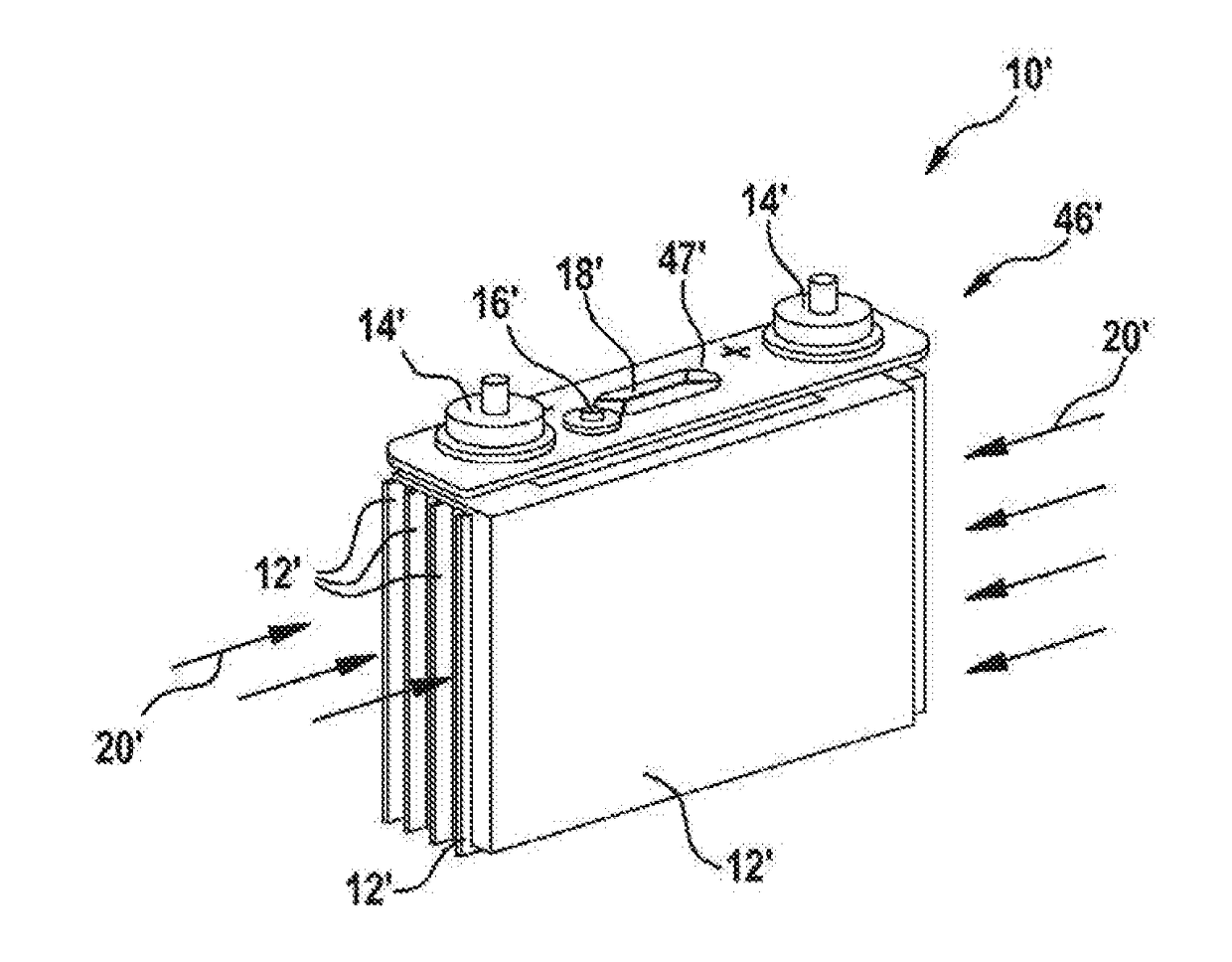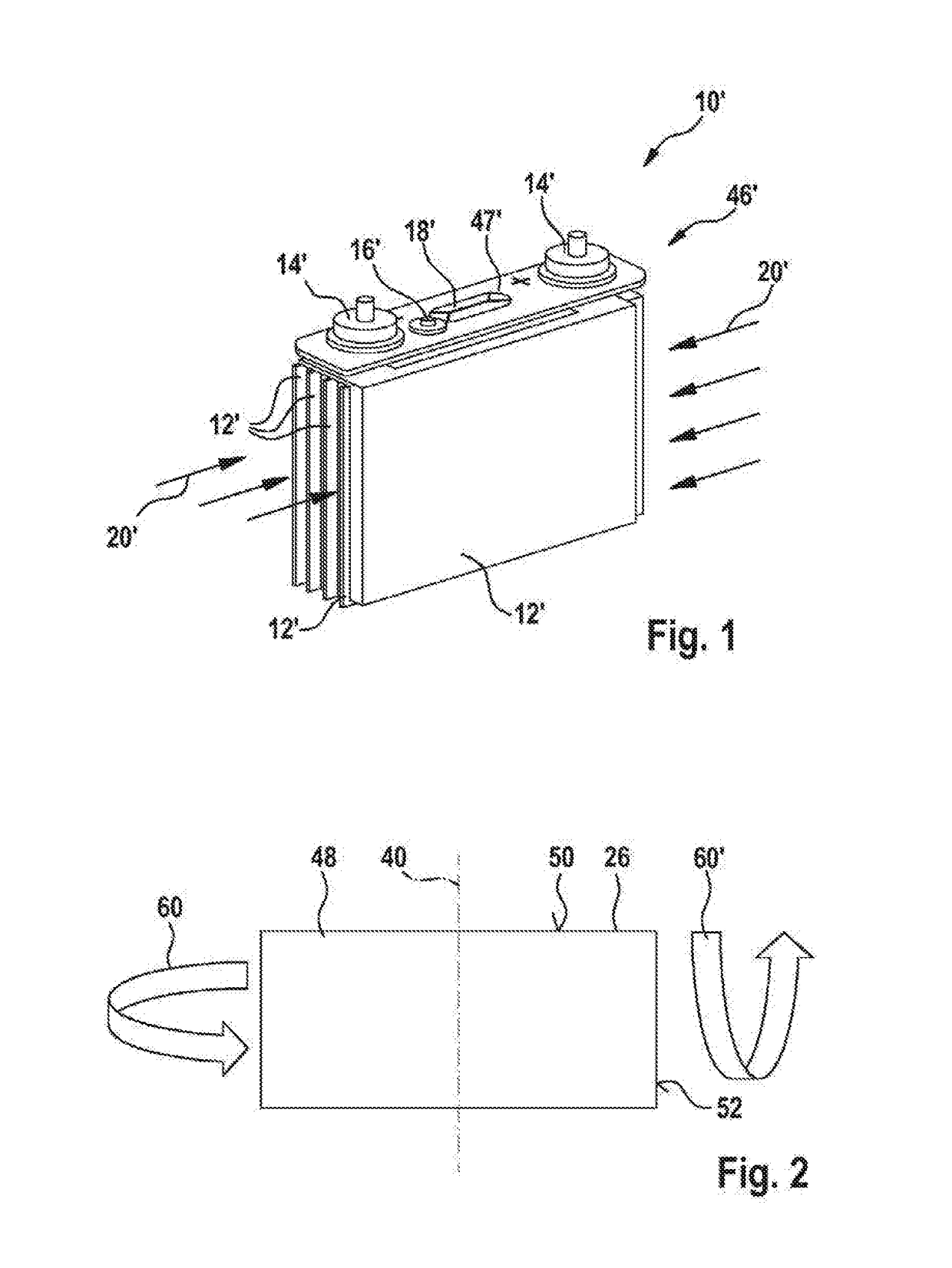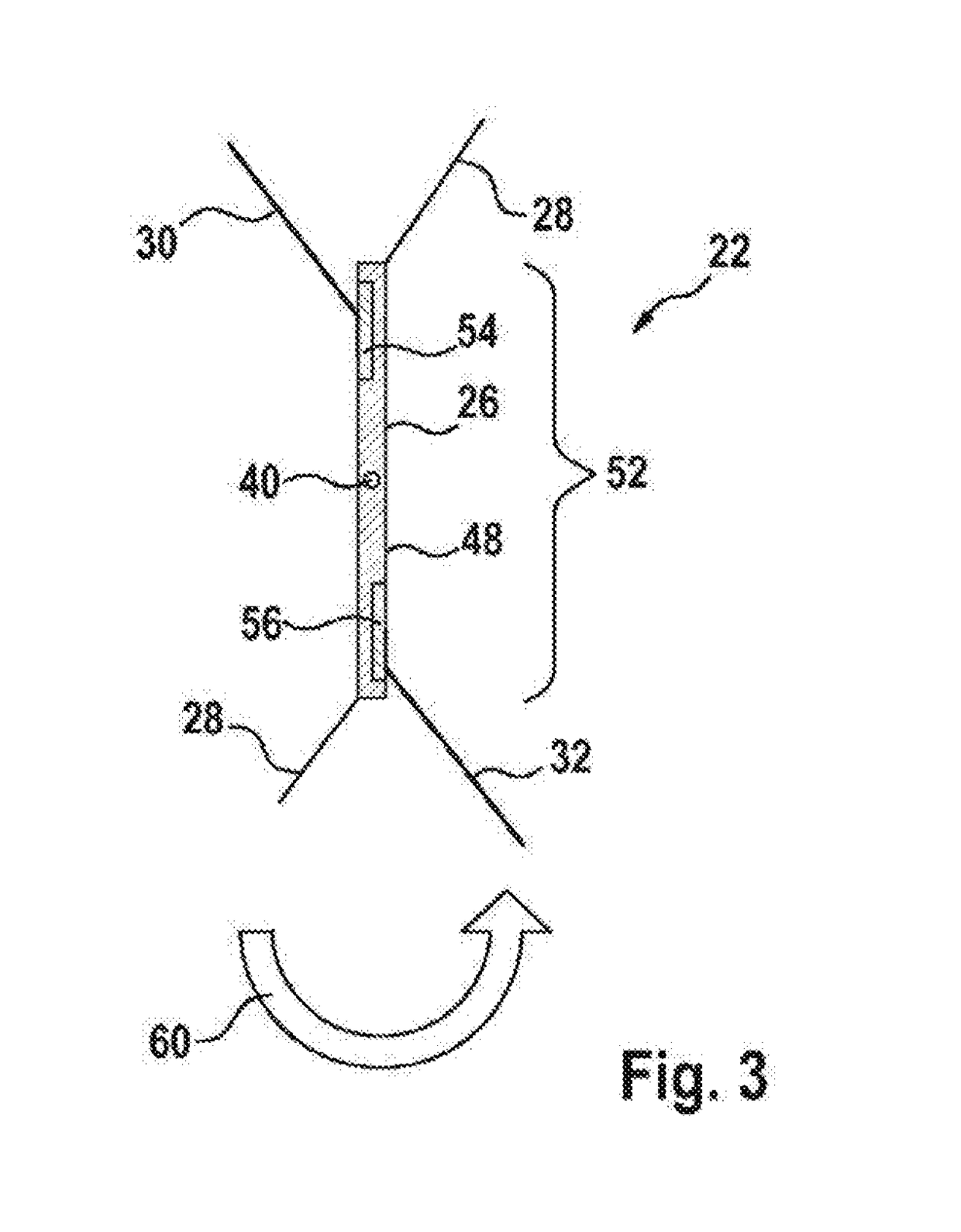Method for Producing a Prismatic Battery Cell
a technology of prismatic batteries and prismatic cells, which is applied in the direction of batteries, sustainable manufacturing/processing, cell components, etc., can solve the problems of requiring contact with current collectors in the interior of the cell housing and leading current paths through the cell housing to the outside, so as to save material costs, increase capacity, and increase energy density
- Summary
- Abstract
- Description
- Claims
- Application Information
AI Technical Summary
Benefits of technology
Problems solved by technology
Method used
Image
Examples
Embodiment Construction
[0037]FIG. 1 shows a prismatic battery cell 10′ in a perspective view according to the prior art.
[0038]The prismatic battery cell 10′ is illustrated without a cell housing, for reasons of clarity, and comprises four battery windings 12′ arranged closely beside one another and a cover group 46′, the cover group 46′ comprising two terminals 14′, by which means electrical contact is made with the prismatic battery cell 10′ from outside.
[0039]The cover group 46′ is additionally assigned a filling opening 16′ and a burst diaphragm 18′. The filling opening 16′ and the burst diaphragm 18′ are located substantially in the center of a terminating plate 47′, whereas the terminals 14′ are placed peripherally on the terminating plate 47′. The battery windings 12′ are inserted into a cell housing and filled with the liquid electrolyte. An inward flow direction 20′ of a liquid electrolyte is indicated by arrows. The liquid electrolyte inFIG. 1 is put in vertically via the filling opening 16′ and ...
PUM
| Property | Measurement | Unit |
|---|---|---|
| size | aaaaa | aaaaa |
| volume | aaaaa | aaaaa |
| negative voltage | aaaaa | aaaaa |
Abstract
Description
Claims
Application Information
 Login to View More
Login to View More - R&D
- Intellectual Property
- Life Sciences
- Materials
- Tech Scout
- Unparalleled Data Quality
- Higher Quality Content
- 60% Fewer Hallucinations
Browse by: Latest US Patents, China's latest patents, Technical Efficacy Thesaurus, Application Domain, Technology Topic, Popular Technical Reports.
© 2025 PatSnap. All rights reserved.Legal|Privacy policy|Modern Slavery Act Transparency Statement|Sitemap|About US| Contact US: help@patsnap.com



